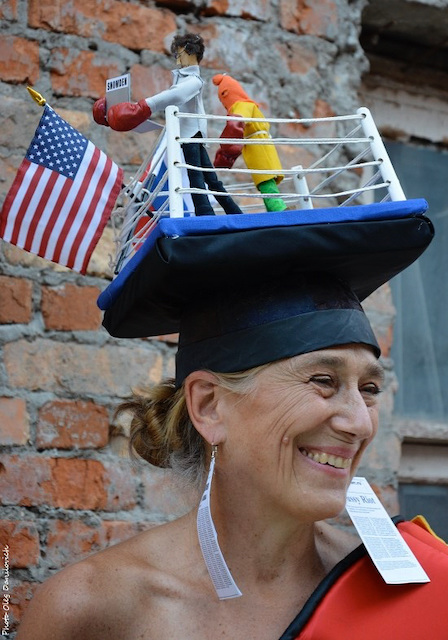
“I’m astonished that a tall, handsome man picked me up out of the confines of my loft and offered me this opportunity,” Pat Oleszko lets out. “I've had museum shows, but this occupies another position in the realm of an artistic life: a solo show in New York.”
The party responsible for scouting the 77-year-old artist? David Pagliarulo, the young dealer behind the newly opened David Peter Francis gallery. He first spotted the performance paraphernalia that made Oleszko something of an urban legend in the ‘70s and ‘80s in a 2020 group show at the now-shuttered gallery JTT, and reached out. “I said, ‘I’m too busy. I’m in a residency, give me two months,’” Oleszko continues. “I kept putting him off then finally he came over, and it was just like, ‘He’s laughing at all my jokes, we can talk forever—this is alright.’”
Fast-forward a few years, and “Pat's Imperfect Present Tense,” Oleszko’s first solo show in New York since 1990, is here. A madcap meander through her cacophonous practice, the exhibition charts five decades of performances and the worn-sculptures and accessories that eternalize them.
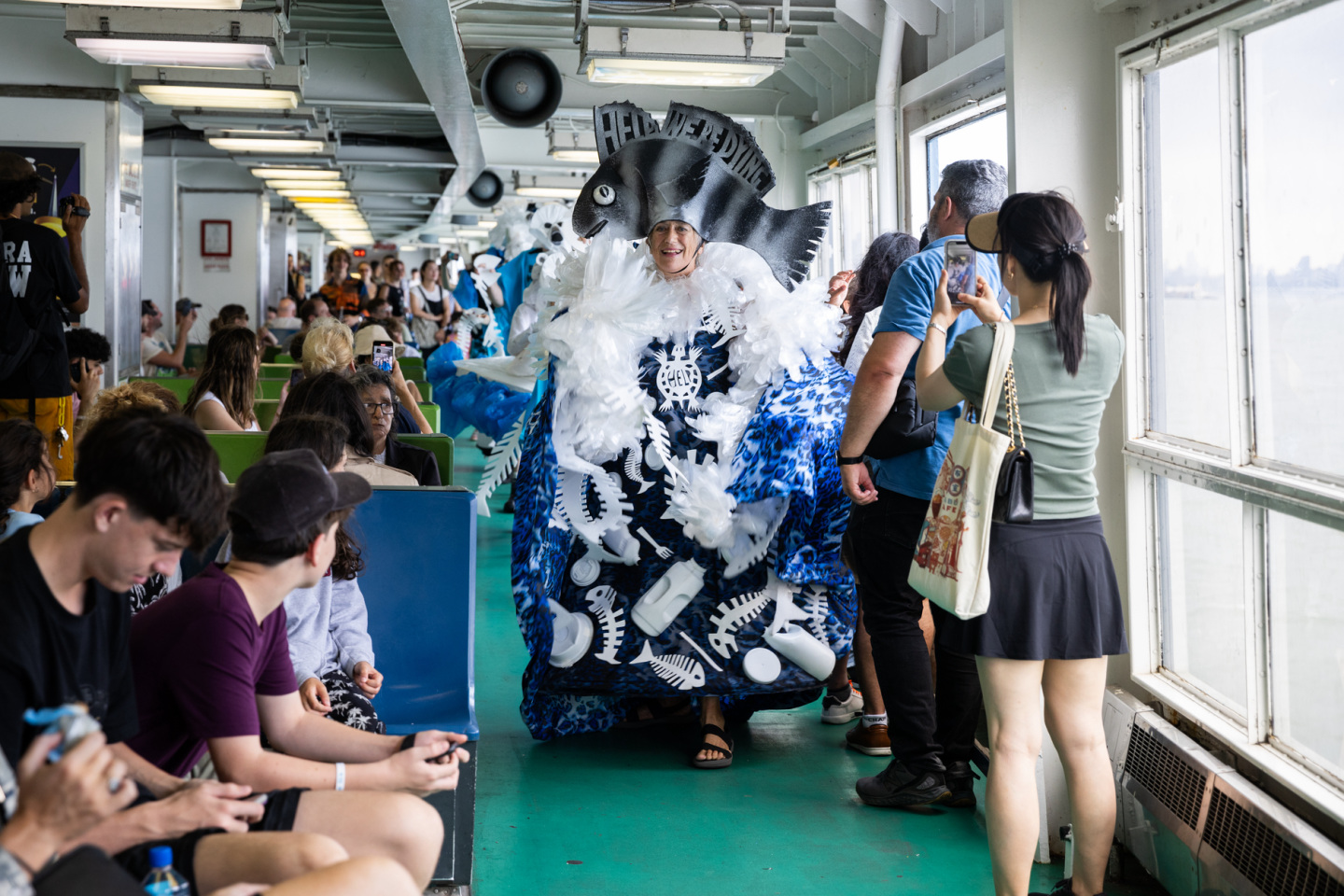


Oleszko’s moment was recently punctuated by yet another laurel: “The Future is For/Boating” a processional intervention that laid siege to the Staten Island Ferry last Sunday. Also featuring Abby Lloyd, Amando Houser, and CULTURED 2024 Young Artist Alex Tatarsky, and presented by curatorial duo ACOMPI, the performance put the artist’s concerns with our changing climate in conversation with her penchant for making a racket.
As the David Peter Francis show continues through July 30, Oleszko takes CULTURED for a tour of a few notable works on view and unspools the stories behind them.

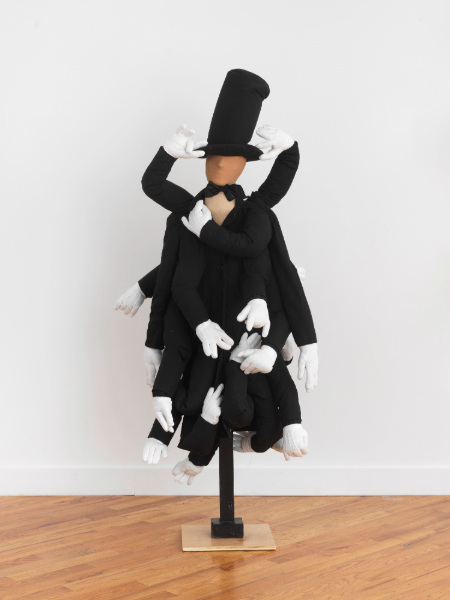
The Coat of Arms, 1972, and The Handmaiden, 1975
“These are both incredibly important to my practice. The Coat of Arms was made when I was invited to a rather important party celebrating the 50th anniversary of the Dadaist manifesto. I was the toast of the town. We went out afterwards, and the whole restaurant stopped and applauded. I’ll probably be buried in it. The Handmaiden is a piece that I actually strip out of. The soundtrack of the piece is a recitation using every possible pun on the words arm, armor, hands… As that’s going on, I’m taking off each hand. These two pieces have been around the world. I had to replace the hands for this show. They were so imbued with patina—a nice way to describe the filth that had gathered on them—that it required hours of refreshment.”
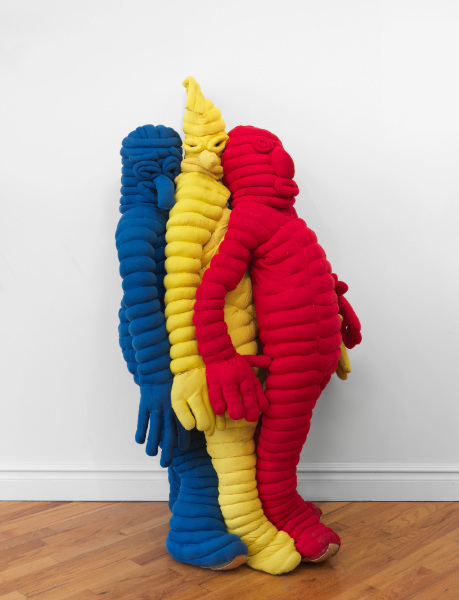
The Padettes of P.O. Town, 1977
“The Padettes of P.O. Town was the newest swinging sensation that ever hit this fair nation. I'm from Detroit, and my whole life I thought the epitome of culture was to be a Black female vocalist. It didn't seem like I was gonna be able to attain that, so I made this piece and they danced to The Miracles’s song “The Tracks of My Tears.” I would wear the dummy in the middle. The other two are stuffed, and it's all sewn together. We would dance in perfect sync, the three of us. It was like poetry in motion—a very popular piece. Once, we went up to Central Park and, as I was performing, these kids started following me, trying to do the same thing I'm doing—a perfect moment.”
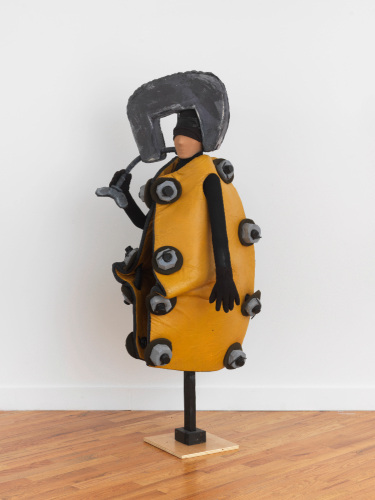
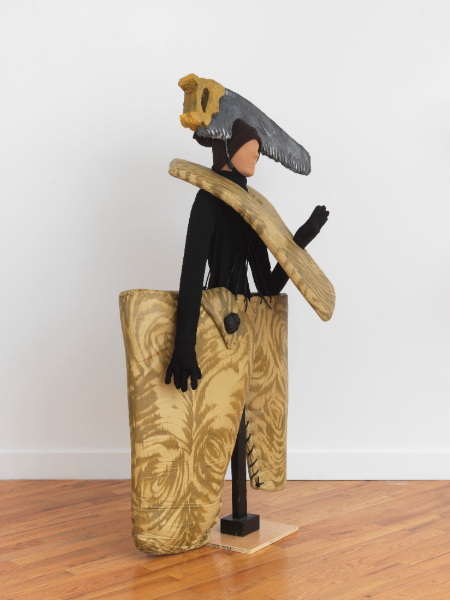

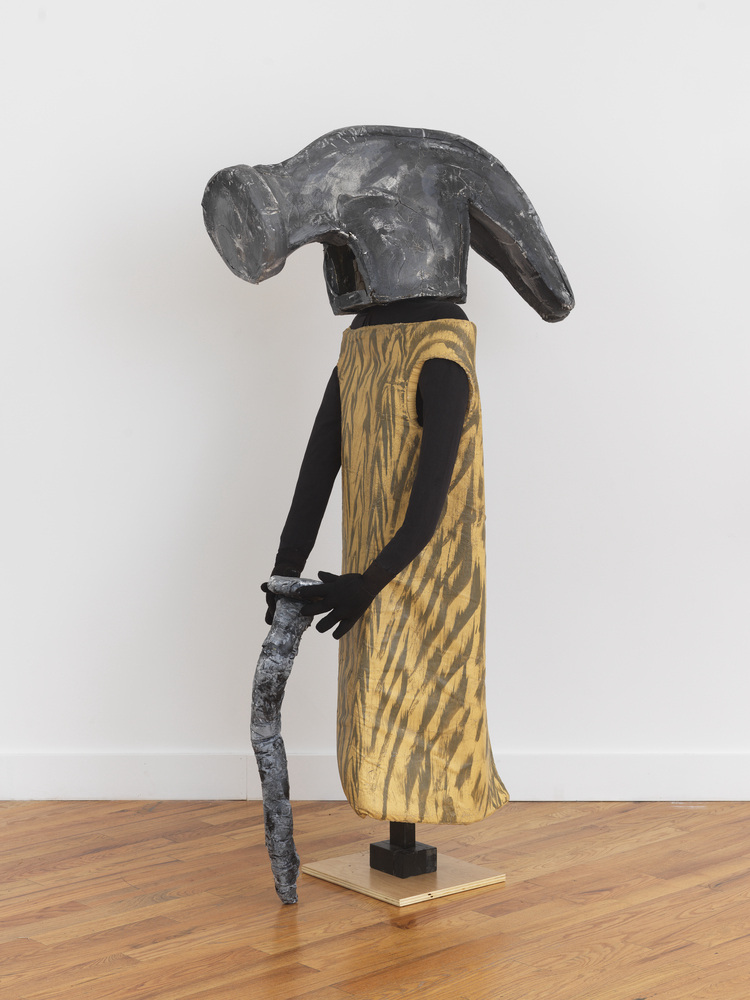
“Tool Jest” Series: Lem-N-Nate, Tom Saw-Yer, and Mike Hammer, 1980
“‘Tool Jest’ was commissioned by the Herman Miller Company. They wanted me to put people in costumes on the streets in front of their competitors. They wanted to emphasize that they were the tools of the trade, so I came up with 10 characters including Anne Inch, Hector Protractor, C. Clamp, Tom Saw-yer, and Mike Hammer. I had people on the street wearing different costumes and doing stuff. Oddly enough, Mike Hammer was playing the saxophone. We did our thing during the day, and then we did this ad hoc corps de ballet in front of the Metropolitan Museum of Art. That was the first time that I performed at the Met. Unfortunately, it was on the steps, but I performed at the Met, okay? I eventually made a movie out of it; it had a long poem about each one of the characters in it, and how this anthropomorphic tool chest could come to your house and fix everything that you couldn't. It satisfied my need to take it out of the commercial world and back into my own.”
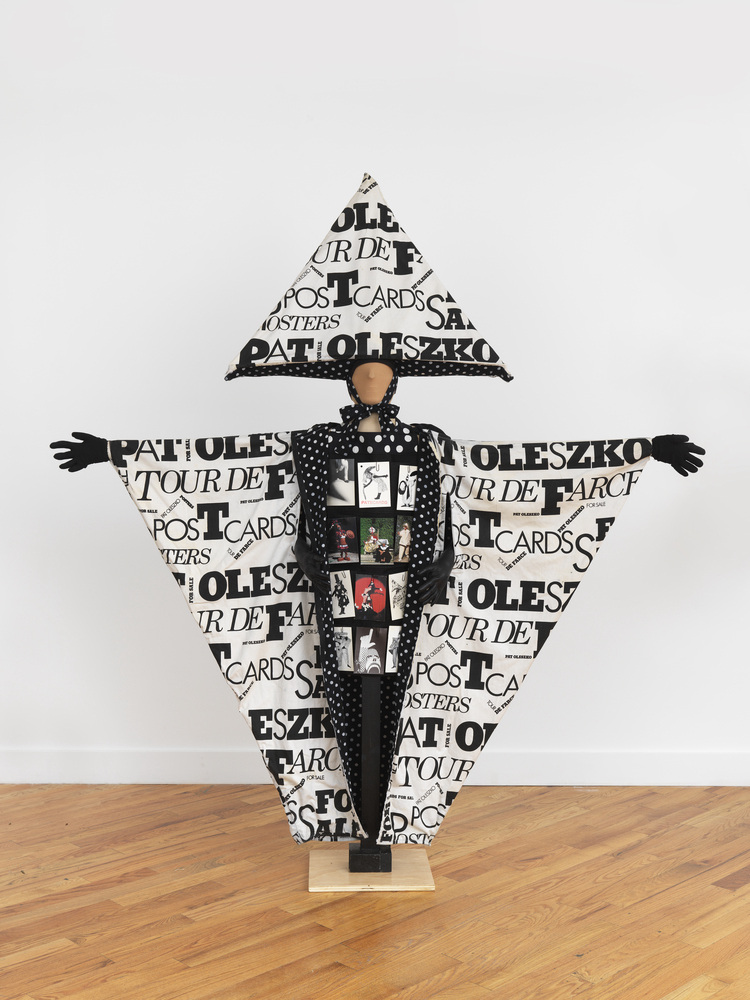
Pat Kiosko, 1980
“At the end of my stage shows, I would come out wearing the kiosk and hawk postcards. It also had some arms sticking out that had posters because I would always make a poster and a postcard for my show. If they liked the show, then I would really make a lot of money. The postcards were a dollar and the posters, in earlier days, might've been $5. I was also selling t-shirts and kisses!”
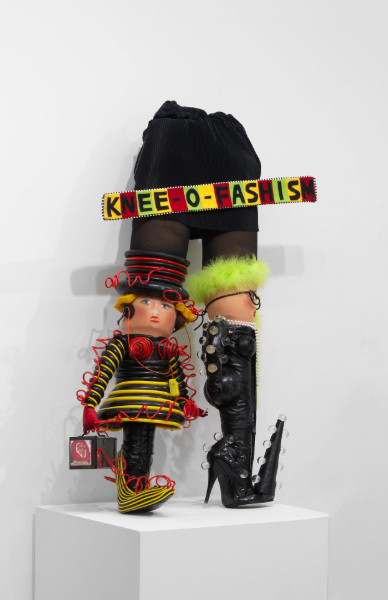
Knee-o-Fashism: Wendy Wear-With-All and Her Sole Sister, Ms. Trixie, 1986
“The New York Times asked four or five artists to interpret the spring fashions. I was paired with someone like Mary Quant or Betsey Johnson—someone that had a really remarkable use of materials. They sent a bunch of stuff over, and then I created these characters, Wendy Wear-With-All and her Sole Sister, Ms. Trixie. I knew that I wanted to have a pair of really high heels to base this thing on. There used to be a store called Lee's Mardi Gras on 14th Street way over on the West Side; at the time, there weren't very many places that were selling to drag queens and people who had big feet like me. I went there and I'm trying on these shoes, and there were a few other people there—young men buying their first pair of heels. I'm showing them how to walk and one of the guys goes to see the owner, Lee, and he comes back and says, ‘Lee said that he thinks he knows who you are.’ I said, ‘Well, who? Who does he think I am?’ And he said, ‘Are you Veruschka?’ I just about died. I also know that she had very big feet. She had a bone removed so that she could continue her career as a supermodel because back in the day, there were no places that had big shoes for people with big feet.”
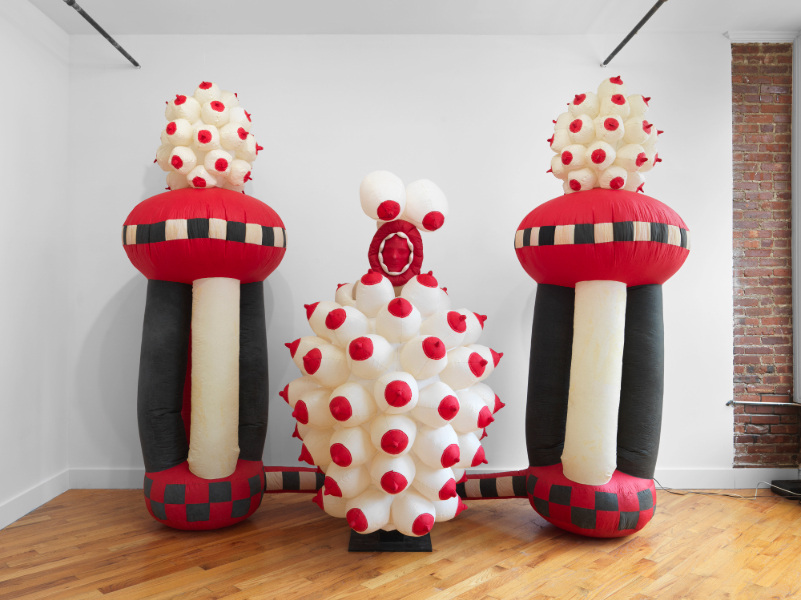
Udder Delight, 1989
“It’s true, I have a breast fixation. I’ve had it for years. I come by it honestly—I was breast fed! This piece was done originally for a rendition of Bluebeard which I called Bluebeard’s Hassle: The Writhes of the Wives. It featured the seven women who he ostensibly killed, but refashioned so that they all became survivors. Each one exemplified one of the seven deadly sins. Udder Delight embodied lust.”
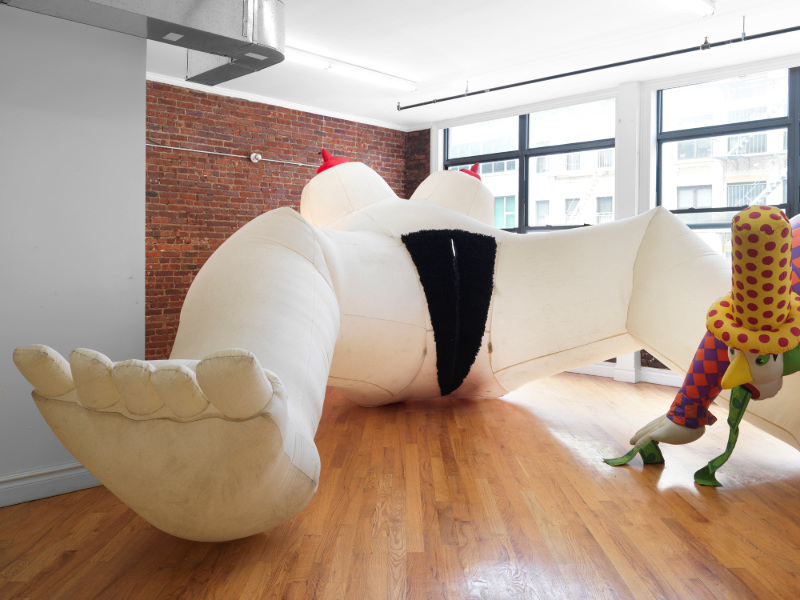
Womb With A View, 1990, and Mr. Green Jeans, 1990
“I created this piece for a performance called Norah’s Ark. The premise was, what if I had been the one chosen to rescue humanity and all its wonders? At the last minute, I couldn’t figure out what the ark would be, then I realized that a womb with a view would be the perfect ark. In the performance, the zipper comes down, I get inside, and the piece starts rollicking back and forth. It’s a very big ending. I often invite people to come inside and see what a woman is really like inside. There’s a candy-striped cock—what else would be inside?”
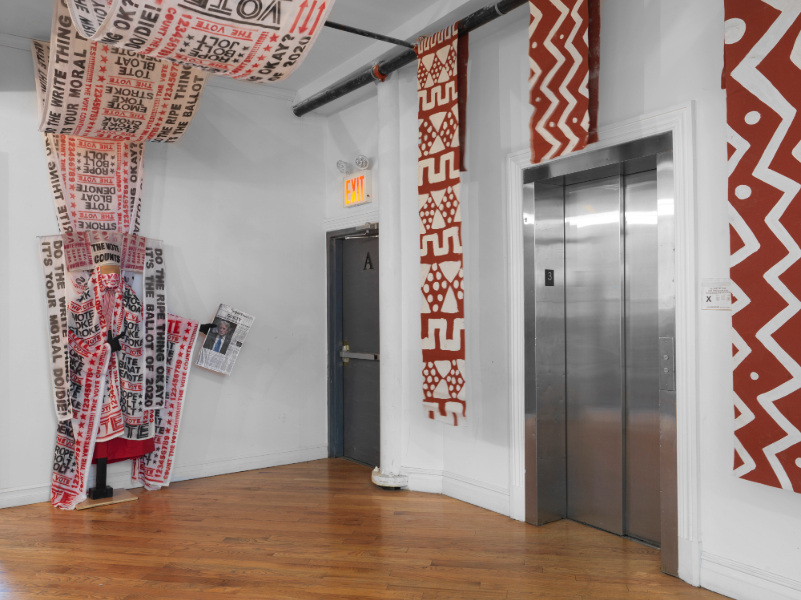
Stoke the Vote, 2020
“This was done originally for the election four years ago. It has a very long tail that's billowed up there and that drags behind me. I wore it for a whole day around the city, and we made a film of it. It was my way of getting out the vote. It will resurface soon, to my dismay. There have been so few moments of joy in my life, politically, that when Trump was convicted recently of those 34 counts, I shrieked, I danced, and my partner went out and got a bottle of Prosecco. It was a moment.”
“Pat's Imperfect Present Tense” by Pat Oleszko is on view at David Peter Francis in New York through July 24, 2024.










 in your life?
in your life?

